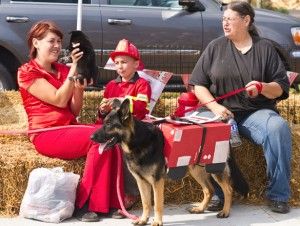Animal shelters shed light on kill and no-kill difference

October 17, 2012
Both kill and no-kill animal shelters play a role in keeping stray animals off of the streets, but the differences between the two can often be more than the names imply.
Christy Anderson, director of Wright-Way no-kill animal shelter, said even though her shelter has developed impressively since its 2002 beginning, there are many pet owners who still aren’t aware of the two facilities Wright-Way runs. She said there was a much higher euthanasia rate among area animal control facilities before the organization was established, as there were limited no-kill options.
Wright-Way hosted an event Oct. 13 at Walker’s Bluff to raise awareness of the shelter, where dogs and cats were up for adoption and attendees were encouraged to bring their pets along.
Advertisement
Without the presence of a no-kill shelter, Anderson said pet owners who can no longer care for their animals will often release the pets into the wild as an alternative to euthenizing them at a kill shelter.
“(Our shelter is) a great option for people who truly want their animal to find another home or get adopted,” Anderson said. “We’re able to help in that process.”
Although Wright-Way is only one of a few no-kill shelters in the area, there are other facilities that operate differently for the same goal.
Shanna Smith, animal control officer at the Marion Animal Control, said although no-kill shelters may be favored by some, they also will not take in animals if their facility is full.
Smith said kill shelters often have a bad reputation because of common misconceptions, but all animal control shelters actually adopt animals much the same way a no-kill shelter does.
She said the Marion Animal Control is considered a low-kill shelter, which means the only animals euthanized are either sick, injured or aggressive beyond the facility’s help.
Many people who hear the term kill shelter also think the facilities can terminate animals at their own discretion, Smith said, but there are rules when dealing with animals’ lives.
Advertisement*
“We do have a 90-day policy here,” Smith said. “But most of our cats and dogs, they’re not here 90 days … They either get adopted out or they get accepted to rescues up north.”
Shelters considered high-kill are many times just small facilities that cover a big area or county, she said.
Animals are constantly brought to these shelters that cannot turn strays away and must be made for the new animals because the facility is small, Smith said.
“They do everything they can to get animals adopted, but being an animal control for an entire county, you have to make tough decisions,” she said.
Anderson said although Wright-Way occasionally has to turn animals away, the shelter is generally able to house most.
Any animal Wright-Way can’t keep can also be sent to its secondary adoption clinic in Niles, Anderson said.
She said the primary Murphysboro facility is 10,000 square feet, and the Niles location is half that size. Another difference between a no-kill shelter and a kill shelter, Smith said, is the way the two entities are funded.
The Marion Animal Control is funded by the city, she said.
Anderson said Wright-Way is funded solely through its adoption fees.
Kay Creese, executive director and veterinarian at no-kill shelter St. Francis Care, said the goal kill and no-kill facilities work toward is quite clear. She said kill shelters are just as important to a community as a no-kill shelter and will often work cooperatively with no-kill facilities to ensure the animals’ well-being.
“Kill shelters are unfortunately a necessity,” Creese said. “The kill shelters do a lot to try to get as many dogs into no-kill shelters as possible, but the numbers can often times be overwhelming. They do a good job in a very tough situation.”
If pet owners maintained their animals vigilantly and exhausted all options before turning them in, stray animals would be much less prevalent, she said.
However, if an owner realizes he or she can no longer care for a pet, Creese said, it is always better to bring the pets into a shelter than to dump them on the side of the road or in the middle of a forest.
Anderson said one service she has made available is a veterinarian clinic called Timber Trails, which offers affordable vaccinations and operations to animals.
The clinic opened in June, Anderson said, and offers as an aid to pet owners because when people get rid of their pets it’s often because they can’t afford to spay or neuter them on top of vaccination costs.
She said on top of the already low cost, Timber Trails offers discounts to pet owners who can show proof of social security, disability or a link card.
The Niles Wright-Way center will hold an open house clinic from 11 a.m. to 3 p.m. Oct. 21 to treat animals for reduced rates without an appointment.
Advertisement







